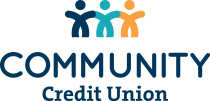Most recent graduates can relate to feelings of confusion and often frustration when it comes to making payments on student loans. Student loans don’t come from a single source; instead, your payments are sent to multiple lenders with multiple interest rates, which can make them difficult to keep track of with differing due dates and payment amounts. One of the best decisions a graduate can make, therefore, is to consolidate multiple loans into one single loan. Consolidating your student loans allows for the peace of mind of managing a single loan with a single interest rate, making payments simpler by paying on just one day a month. If you’re asking yourself how to consolidate student loans for yourself or a family member, read on—the application process for most programs is simple, fast, and easy.
Federal Student Loans:
There are two types of student loans; federal student loans and private student loans. By default, most federal loans can be consolidated under a Direct Consolidation Loan. Using a weighted average of each loan’s interest rate rounded up to the nearest one-eighth of one percent, the Direct Consolidation Loan allows you to consolidate such loans as the Direct Subsidized Loan and Unsubsidized Loan, Direct PLUS loan, Subsidized Federal Stafford and Unsubsidized Federal Stafford Loan, as well as a number of others. Your Federal Student Loans may also qualify for loan forgiveness or a repayment plan based on income or number of family members.
The Pros:
The application is free, and can even lengthen your repayment period up to thirty years. You will make a single payment to one lender at a single rate of interest once a month. Additionally, you can prepay anytime without being penalized.
The Cons:
If you opt for a longer repayment period, the amount of interest you’ll pay over those thirty years will be more than a shorter repayment period, despite having lower monthly payments. Additionally, Parent PLUS loans cannot be consolidated with student loans at this time. Finally, if you’ve made significant progress towards loan forgiveness, it might not be best to consolidate you loans since these programs often depend upon serving or making payments for a certain number of years under a particular loan program. Since consolidation pays off all of your old loans with a new one, it may be worth making payments at different times and different rates so you can qualify sooner.
To Qualify:
To be eligible for consolidation, you will need to be either a graduate, enrolled in school but below a half-time course load, or unenrolled. Credit score does not affect eligibility.
How to Consolidate Student Loans:
The first step towards federal loan consolidation is to visit StudentLoans.gov and fill out an application, which can then be submitted online or by mail. You will need a verified Federal Student Aid ID, basic personal information, and income-related information, especially if you would like to apply for income-driven repayment programs. The application process should take about thirty minutes, after which a consolidation servicer will help answer any questions and guide you through the rest of the process.
Private Student Loans:
If you have this second type of loan, you will need to refinance in order to consolidate. To fill out the necessary forms, be sure to have your current income, history of employment, education, and credit score information ready. Individuals with higher credit scores (600 and above), an established history of on-time loan payments, and secure employment are most likely to be approved for a loan. Rather than a weighted average, interest rates on private loans may vary, usually falling between 2-9%. Thus, refinancing private loans may actually save money through lower interest payments over time. Be sure to research the repayment plans available to you, since some loans will be able to consolidate both your federal loans as well as private ones.
Managing student loan payments doesn’t have to be a burdensome process—with the right consolidation plan, making payments can not only become an effortless habit, but will also give you peace of mind, potentially greater savings, and a solid credit score as you manage your monthly payments with ease.

